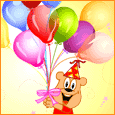 Total Physical Response known worldwide as TPR
Total Physical Response known worldwide as TPR To ensure success, pretest a few lessons before you enter your classroom. Try the lessons out with your children, your friends or your neighbors. In doing this, you
become convinced that TPR actually works,
build self-confidence in the approach, and
smooth out your delivery.
For Students of All Ages, Including Adults
Use TPR for new vocabulary and grammar, to help your students immediately understand the target language in chunks rather than word-by-word. This instant success is absolutely thrilling for students. You will hear them say to each other, “Wow! I actually understand what the instructor is saying.”
After a “silent period” of about three weeks listening to you and following your directions in the target language (without translation), your students will be ready to talk, read and write. InshaAllah :)
become convinced that TPR actually works,
build self-confidence in the approach, and
smooth out your delivery.
For Students of All Ages, Including Adults
Use TPR for new vocabulary and grammar, to help your students immediately understand the target language in chunks rather than word-by-word. This instant success is absolutely thrilling for students. You will hear them say to each other, “Wow! I actually understand what the instructor is saying.”
After a “silent period” of about three weeks listening to you and following your directions in the target language (without translation), your students will be ready to talk, read and write. InshaAllah :)




